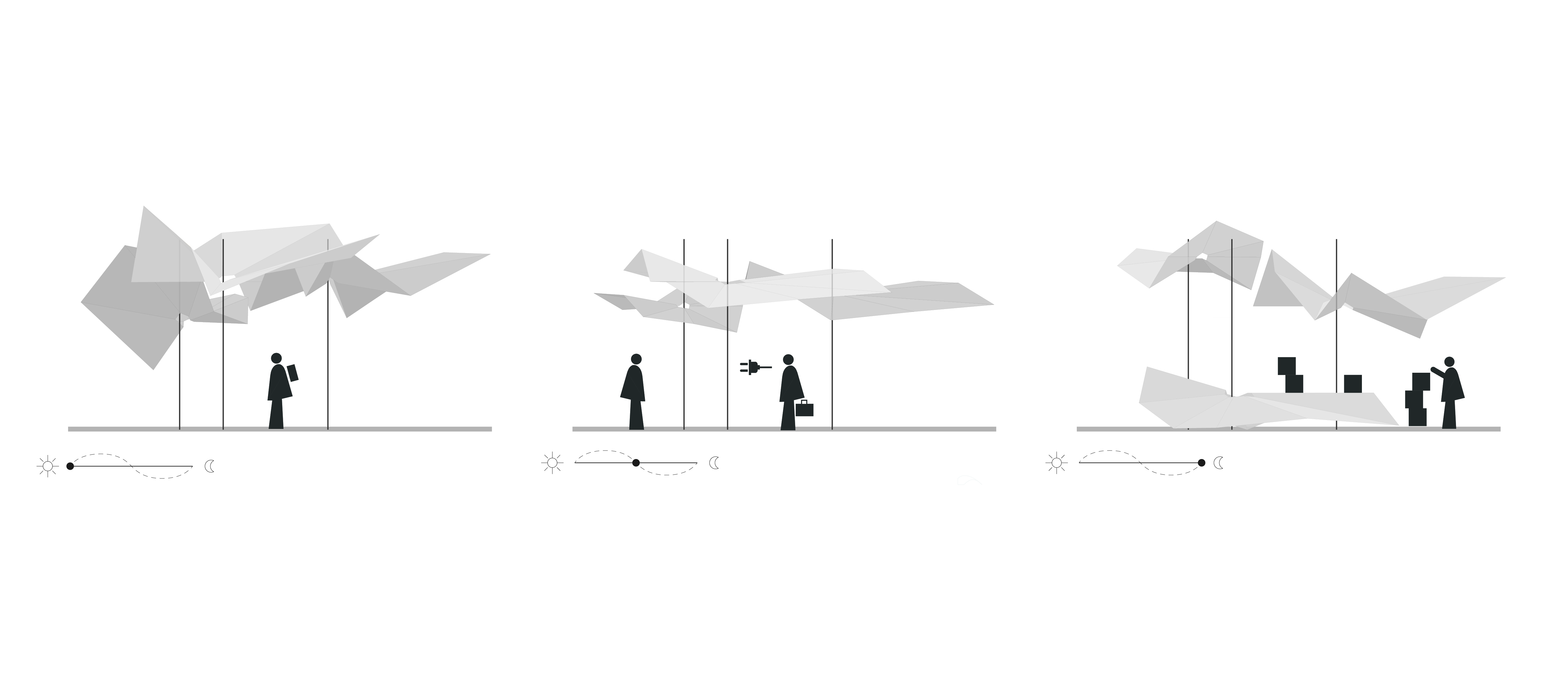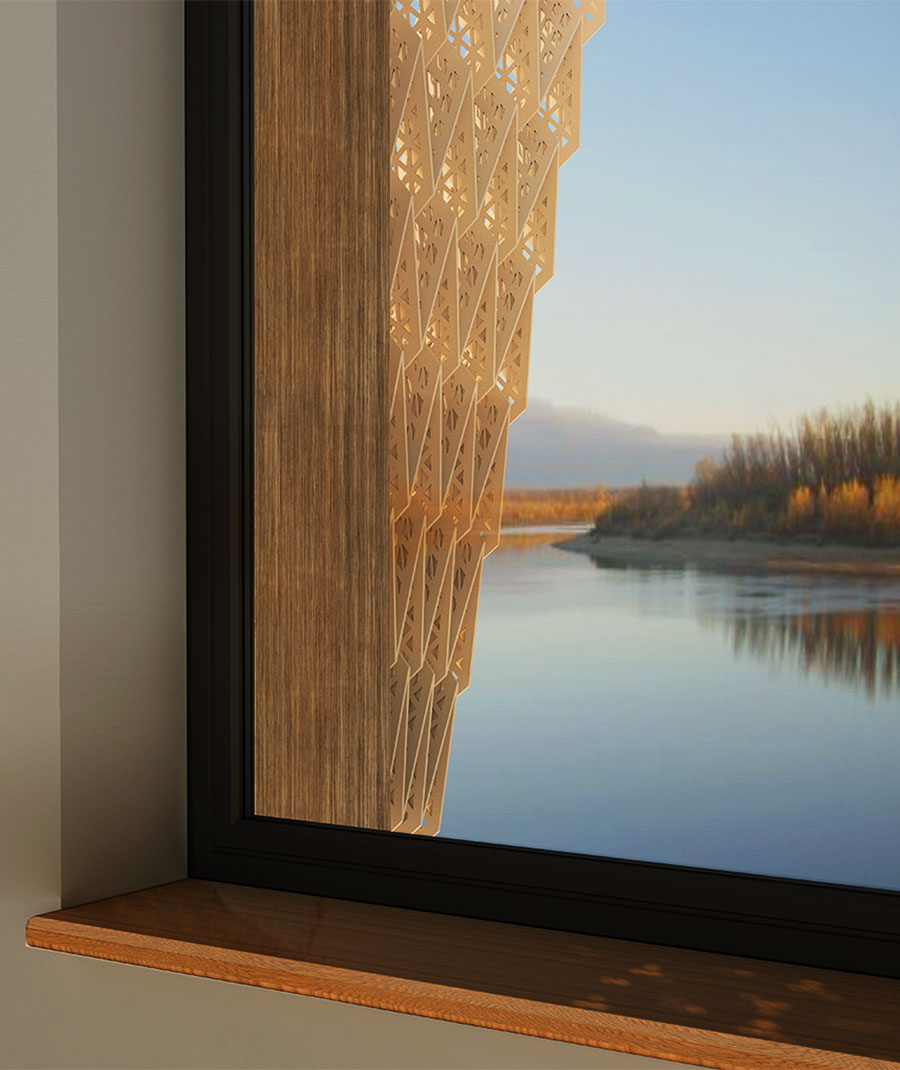This research focuses on the design of an outdoor shade-providing small pavilion, which is specifically conceived to host several ancillary functions at exhibition or event spaces in hot desert climates.
The bid processes to host large world-scale events have seen a growing participation of countries in the tropical and subtropical area. One of the major challenges that these countries will have to face in order to allow full use of their outdoor event spaces will be the human bodily comfort, in order to make visitors feel comfortable and improve their event experience. Previous exhibition experiences have been considered, showing a demand for multipurpose places that respond to contemporary human changing patterns and technologically influenced lifestyles.
A common approach to design a space capable of adjusting or responding to different conditions or situations is to incorporate a capacity for change and flexibility in terms of space, time and function. To that end, an adaptive enclosure component has been designed. It consists of movable elements aiming to create an interactive environment where the space can engage in communication with its occupants and environment.
The proposal consists of modular self-standing umbrellas allowing different space configurations through base modules combination and alternating full and empty spaces. Base modules assembly constitutes a light horizontal canopy. Canopy surfaces are made of rigid panel, which allows the surfaces to fold along “digital hinges”. Changing position through a computerized system, the enclosure elements progressively transform increasing or decreasing the size of the shady area and altering the level of intimacy and opening of the space.
Beyond the general function of offering a comfortable resting place the adaptive component is used as a context mediator, facilitating interaction, stimulating visual engagement, changing and extending the use of the surrounding space, either through a short or long period of time.






